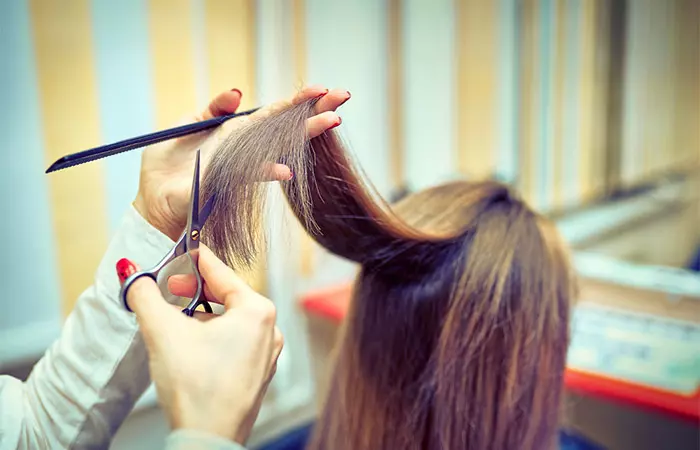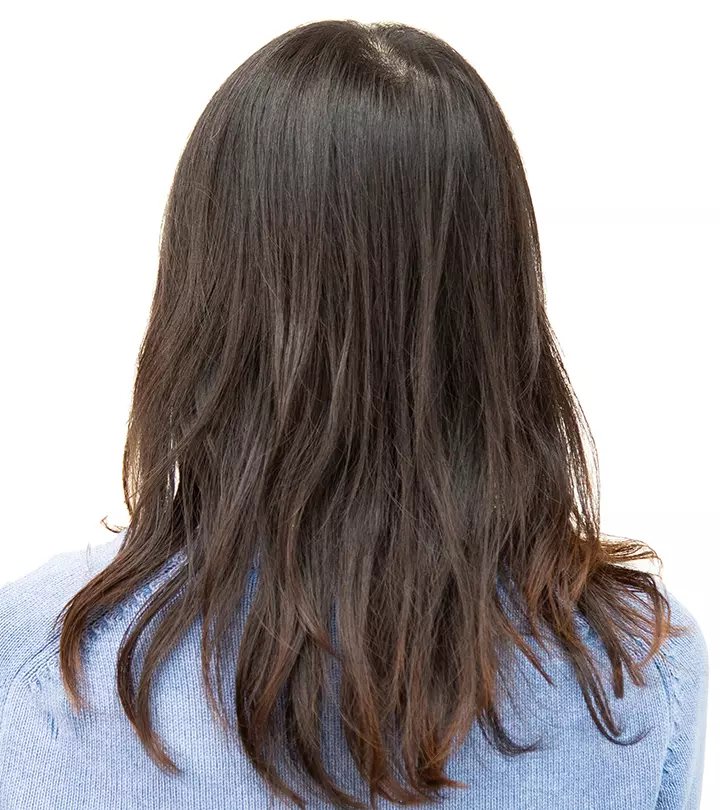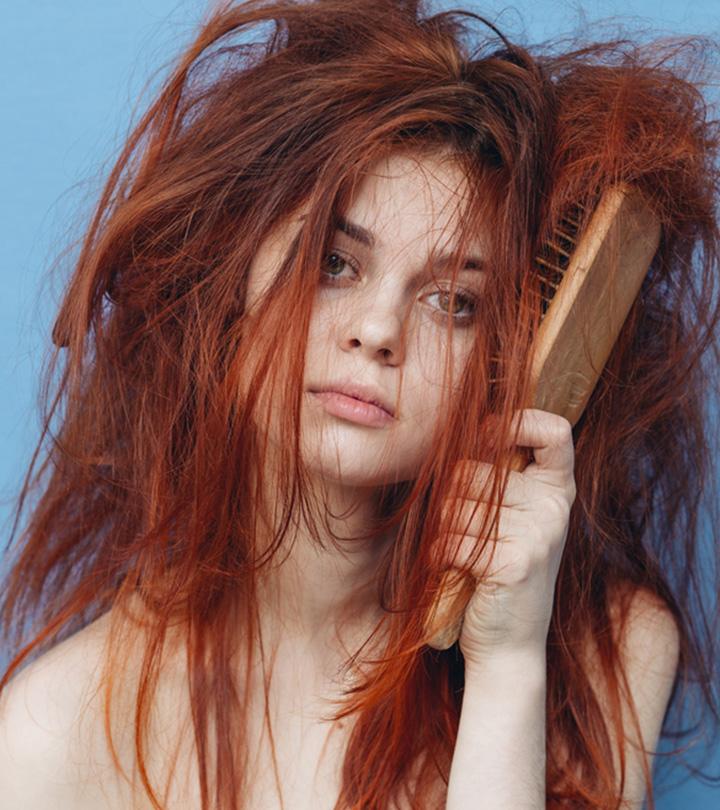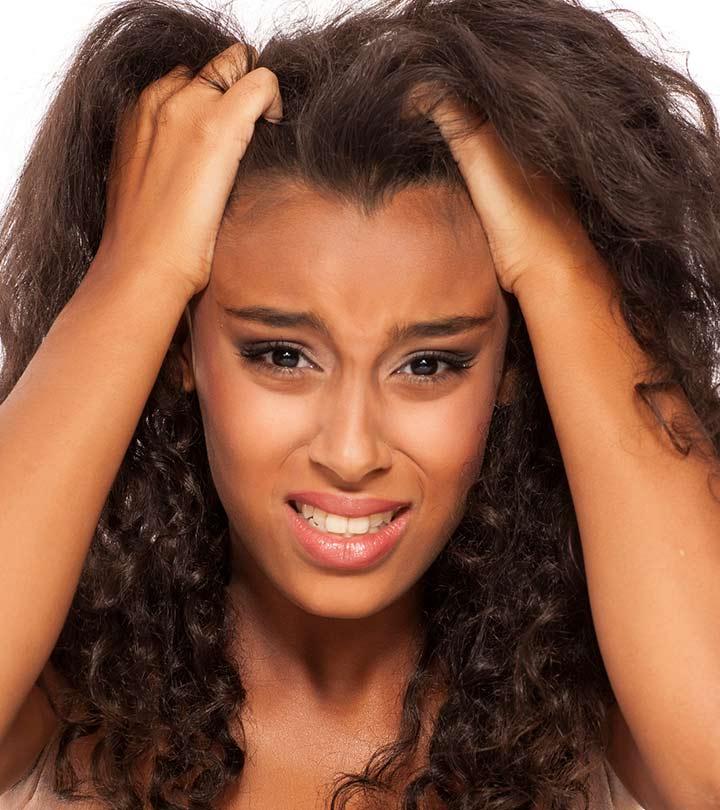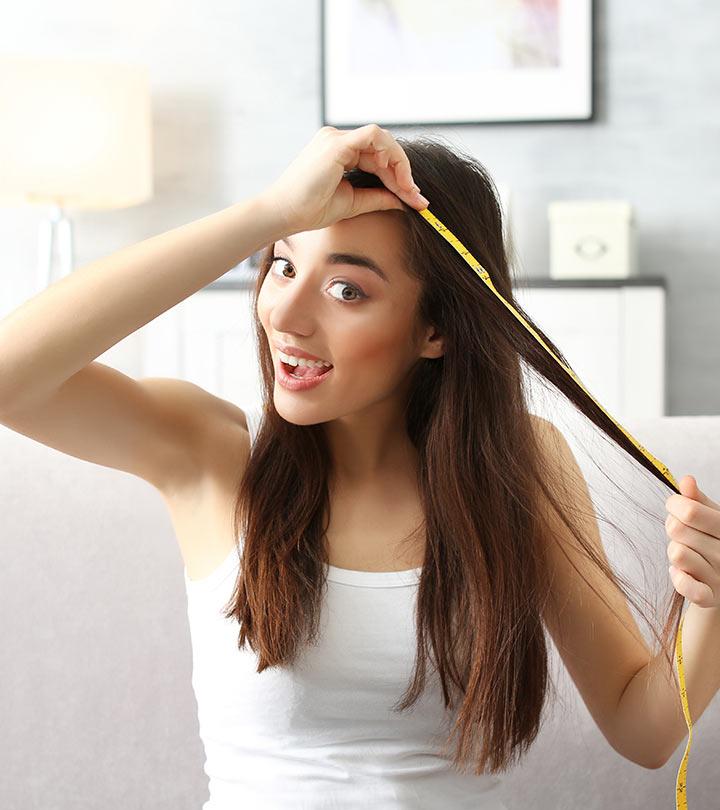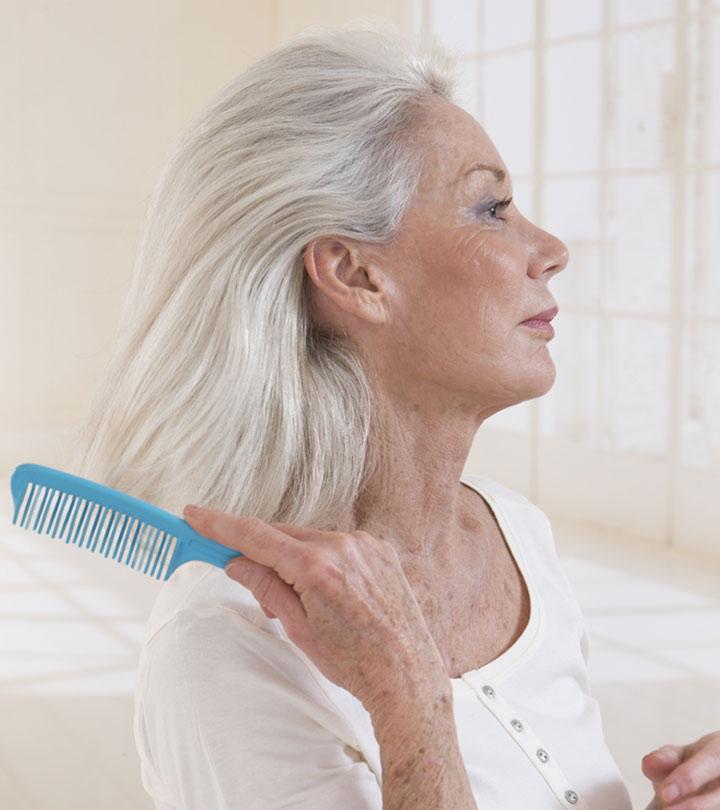Do I Have Thick Or Thin Hair? Ways To Check The Hair Texture And Beauty Hacks
Knowing the difference can entirely change how you care for and maintain your hair.
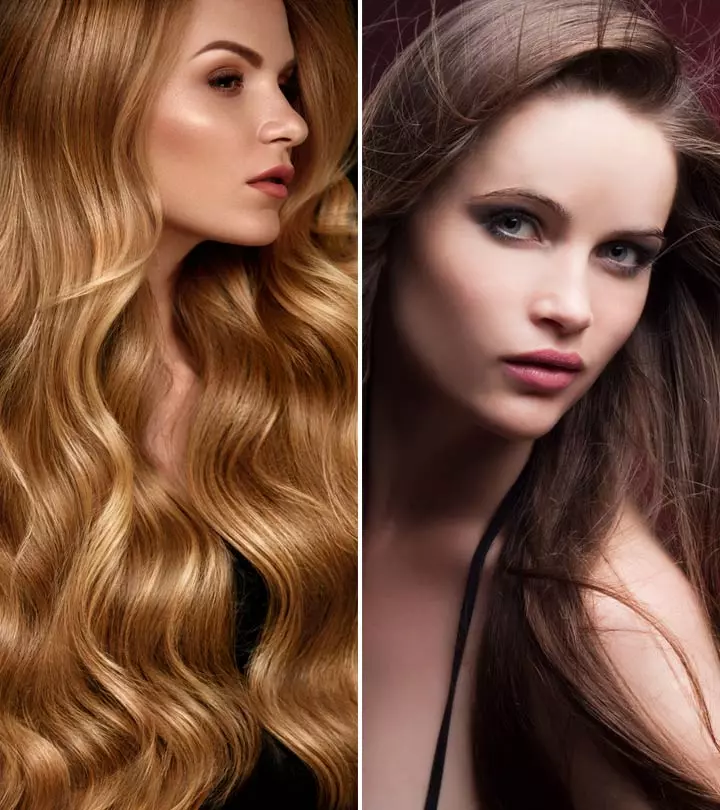
Image: Shutterstock
Thick vs. thin hair – How do you know which type you have? Does it refer to the total girth, or is it about how thick or thin a single strand of your hair is? Well, it is the latter. This article lists out all the differences between thick hair and thin hair, along with a few useful hair hacks to thin out thick hair and vice versa. Read on to know more!
In This Article
What Is Thick Hair?
Hair thickness indicates the width of a single hair strand. People often confuse thick hair with a density of hair. Hair density is a measure of the number of hair strands per square inch of the scalp.
What Is Thin Hair?
If the hair thickness is lesser than the width of a thread, it is referred to as thin hair.
Confused whether you have thick or thin hair? The next section differentiates between the two clearly. Read on!
Thick Vs Thin Hair
Appearance And Diameter
| Thick Hair | Thin Hair |
|---|---|
| A single hair strand is coarse to touch. | A single hair strand cannot be felt on the hands. But the texture is smooth and soft. |
| The hair strand is visible clearly. | The hair strand is hardly visible. |
| The diameter is 120 microns. | The diameter is 50 microns. |
| The average thickness is 0.08-1 mm. | The average thickness is 0.04-0.06 mm. |
Hair Density
To check your hair density, tie a ponytail on the top of the crown, and measure its circumference.
| Thick Hair | Thin Hair |
|---|---|
| The circumference of the ponytail is more than 2 inches. | The circumference of the ponytail is less than 2 inches. |
Hair Follicles
Hair follicles are tiny pockets on the scalp from where hair roots are developed and hair grows out. The size of these pockets determines the texture and density of the hair.
| Thick Hair | Thin Hair |
|---|---|
| Large hair follicles. | Small hair follicles. |
| More number of hair follicles per square inch of the scalp. | Less number of hair follicles per square inch of the scalp. |
Hair Width
Hair width is the circumference or thickness of each hair strand.
| Thick Hair | Thin Hair |
|---|---|
| Thick hair strands have a large circumference and look coarse under the light. | Thin hair strands have a small circumference and are barely visible under the light. |
Now that you have a fair idea of your hair type, here’s how to analyze hair thickness.
How To Measure Hair Thickness
1. Strand Test
This simple method may help you analyze the thickness of your hair easily at home. All you need is a hair strand.
- Pluck a single hair strand and hold it in between your fingers.
- If you cannot feel the hair, and it is not visible to the naked eye, it is thin.
- If you can feel it a little, it is medium hair.
- If you feel it is grainy and strong, your hair texture is thick.
Check out this video for more details:
2. Thread Test
Pluck a hair strand and place it beside a strand of thread. Observe the following to analyze the thickness:
- If your hair is slimmer than the thread, it is thin hair.
- If it matches the thickness of the thread, it is medium hair.
- If the hair thickness is more than the thickness of the thread, you have thick hair.
The next section will help you distinguish between thin and fine hair. Keep scrolling!
Difference Between Thin And Fine Hair
If your mane has less volume and the hair follicles are far apart, your hair looks thin.
‘Fine’refers to the width or diameter of a single hair strand. Fine hair is smooth and silky, but it might not always mean that the hair follicles are far apart. This hair type is lightweight and prone to breakage.
For better understanding, we have discussed the term ‘low-density hair’ and ‘high-density hair’ in the following section.
Low-Density Hair Vs. High-Density Hair
Low-density hair means the number of hair strands on your scalp is lesser than normal. The hair strands are fragile, and your scalp is visible. It is difficult to style low-density hair and get a voluminous look.
High-density hair means the number of hair strands on your scalp is high. This hair type tends to tangle more but looks voluminous and is easy to style.
Whether you have thick or thin hair, you might face some issues with hairstyles. Check the following section to know what they are.
Thick And Thin Hair Problems
- If you have thin hair you will find it difficult to tie a ponytail. The clips and rubber bands tend to slip because of the smooth texture of thin hair. Your tresses might not hold any curls and look limp or greasy without a good conditioner or hair mask.
- If you have thick hair, it is prone to tangles and takes up a long time to blowdry. You need big hair accessories to tie thick hair properly. It takes a lot of time to dry damp, thick hair, and it might feel wet throughout the day.
Manisha, a YouTube vlogger, shared her thick hair problems and explained how difficult it is for her to try different hairstyles. In her vlog, she says, “I can not tell you how many hours I am wasted and being late to try all these hairstyles. It’s about five of them for an hour, realizing none of them work (i).”
Check out the next section for some beauty hacks to make your thin hair look voluminous.
How To Get A Thick Hair When It Is Thin
- Trim your hair short to create the illusion of thicker-looking hair. Chop a few inches at the tip and add some layers for a voluminous look.
- A volumizing shampoo helps add body to your limp, thin hair.
- Blow dry your hair with volumizing styling products. Use a lightweight mousse to achieve a long-lasting bouncy look.
- Use the right kind of hairbrush to help boost the hair volume. Brushes made of boar bristles are gentle on the scalp and add volume to thin hair.
- Spray a dry shampoo on the roots of your hair to cleanse your locks and add volume without making your hair greasy.
- Tie your thin hair in a double ponytail to make it look voluminous.
 Quick Tip
Quick TipIf you are frustrated with managing your thick, coarse hair and want to make it shiny and smooth, here is your solution. Read on!
How To Thin Out Thick Hair
- Choose a hair treatment for your thick hair. Apply a deep moisturizing hair mask or spa treatment cream to control the volume and impart a shiny, smooth look to your cuticles.
- Use a smoothening shampoo and conditioner to make your hair visibly thin.
- Rinse your hair with cold water. Washing the hair with hot water strips essential oils from the scalp, making the locks dry and frizzy.
- Apply hair cream or serum before blow drying. This will weigh the hair down without making it greasy.
- Try a flat iron for a smooth and sleek look.
Our hair changes as we age and you can also change the texture with chemical treatments. However, if you wonder if is it possible to change the hair type permanently, we have the answer in the next section.
Can You Change Your Hair Type?
The instant response would be no. However, hair type can be subtly transformed using minoxidil if your aim is to change it from thin to thick. According to anecdotal evidence, this common medication used for managing hair thinning and hair loss can improve the density of the hair as well. You can also try changing your shampoo and look for the ones that can help you achieve your desired hair type. For instance, keratin shampoos are ideal for individuals with thick hair as they can aid in combating frizz, while biotin or argan oil-based shampoos promote thickness and tackle thinning strands.
 Quick Tip
Quick TipInfographic: Thick Vs. Thin Hair: A Comprehensive Guide
Hair texture is an important factor that helps you choose the correct haircare and styling product. However, the confusion between thick and thin hair can have an impact on the hair care routine you build for yourself. To solve this problem, we have created a comprehensive guide to help you understand the difference between thick and thin hair in the infographic below! Illustration: StyleCraze Design Team
The difference between thick vs. thin hair is very clear. Following the thread test, if your hair’s thickness is less than a thread, you have thin hair. If your hair is wider than the thread, then you have thick hair. Thicker hair also appears and feels coarse, as opposed to thin hair, which feels smooth and soft. Check your hair density, hair follicles, and hair width to confirm if you have thin or thick hair. You can also try the strand test to check your hair thickness. Both thin and thick hair have their own issues. Scroll back up to learn how to thin out thick hair and vice versa!
Frequently Asked Questions
What is normal: thin or thick hair?
Thin and thick hair are two different types of hair determined by various factors, such as genetics, hormones, nutrition and lifestyle habits. Therefore, they are both normal. However, consult a dermatologist if you experience any hair thinning suddenly or gradually.
Is thick or thin hair more attractive?
There is no common consensus on what type of hair is more attractive. Additional factors such as texture and shine, along with individual preferences are also taken into account when determining the beauty standard for hair volume.
What hair type has thick hair?
Any hair type From 1A to 4C can have thick hair. Hair thickness largely depends on genetics and environmental factors.
What are the genetic and environmental factors that contribute to the thickness or thinness of a person’s hair, and how do these factors vary between individuals and ethnic groups?
Hair thickness is largely hereditary and depends on factors like age, the presence of any health condition that is affecting hair health, hormonal imbalance, nutritional deficiencies, and the use of harsh chemicals like dyes and heat styling tools.
Hair thickness also generally varies according to ethnic groups. A study conducted showed that individuals with Asian ancestry had a larger hair diameter than those of African or Caucasian descent (1). Apart from the presence of specific genes, hair care practices followed by individuals or traditional practices followed by ethnic groups may be the cause behind this variation.
What are some common misconceptions about thick or thin hair, and how can these misunderstandings be dispelled through education and awareness?
Common misconceptions include myths like thick hair is stronger than thin hair and that thin hair is generally flat. Encouraging people to follow good hair practices, showing them appropriate styling hacks, and educating them about different hairstyles and which hair products are suitable for their hair type can help clear these misunderstandings.
How does hair thickness or thinness affect hair loss or baldness, and what are some treatments or preventative measures that can be taken to address these concerns?
According to anecdotal evidence, thin hair is more prone to breakage, thereby leading to hair loss. In such cases, it is advised to consult your dermatologist to formulate a hair care plan that is specific to your hair concerns. You can also avoid heat styling, follow good hair care practices, start the intake of required vitamin and mineral supplements, and maintain a balanced and healthy diet to prevent hair loss.
How do hair products and styling tools differ in their effectiveness and suitability for thick versus thin hair, and what are some product recommendations for each hair type?
Thick hair generally requires products that do not weigh it down while thin hair needs a volumizing boost. Thick hair requires a hairspray with a strong hold compared to thin hair. It is important to note that these are general recommendations and may not be suitable for everyone.
How does hair thickness or thinness affect hair color and dyeing options, and what are some considerations for choosing a color that suits either hair type?
Thick hair may require more processing than thin hair. Thin hair is prone to damage and hence you should look for relatively gentle, nourishing products. The most suitable hair color to choose mostly depends on your skin tone and natural hair color rather than the thickness of your strands.
How does hair thickness or thinness affect haircuts and styling options, and what are some haircut recommendations for each hair type?
Layered hairstyles and bangs or other suitable textured hairstyles suit thick hair, while short haircuts like the pixie cut or a bob suit thin hair more.
Key Takeaways
- Large hair follicles, a ponytail with more than 2 inches of circumference, and clearly visible hair strands are some indicators of thick hair.
- If your hair is thinner than a thread or not visible to the naked eye, chances are you have thin hair.
- One can always trim their hair and use a volumizing shampoo to give the appearance of thicker and voluminous hair.
- Application of deep moisturizing hair masks and a smoothening shampoo can make your hair look thinner and slicker.

Image: Stable Diffusion/StyleCraze Design Team
Do you want to know how to get thick hair? Watch this engaging video on how you can improve your hair texture and health with the help of a few home remedies and hair care hacks.
Personal Experience: Source
StyleCraze's articles are interwoven with authentic personal narratives that provide depth and resonance to our content. Below are the sources of the personal accounts referenced in this article.
i. thick hair problemshttps://www.youtube.com/watch?v=oeqrQDnTT1M
References
Articles on StyleCraze are backed by verified information from peer-reviewed and academic research papers, reputed organizations, research institutions, and medical associations to ensure accuracy and relevance. Read our editorial policy to learn more.
- Diversity in human hair growth, diameter, color and shape. An in vivo study on young adults from 24 different ethnic groups observed in the five continents
https://pubmed.ncbi.nlm.nih.gov/27019510/
Read full bio of Dr. Shruti Chavan
Read full bio of Eshna Das
Read full bio of Krati Darak








